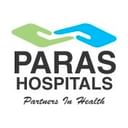Low Back Ache - Causes and Treatment
There is a fun saying that anybody who has a back is going to have back pain. Jokes apart, its a stark reality that we are witnessing and will continue to witness in the coming decades due to the over dependence on machines for day to day activities and a higher prevalence of sedentary life style, especially among the young generation whose work depends on computers and staying indoors mostly.
90% people suffer from back pain in their lifetime, among them a fair number need medical help for the same.
Symptoms may include:
- Difficulty in sitting/walking/standing due to back pain
- Pain radiating to buttock, thigh, and or leg
- Muscle spasm and stiffness, sometimes in the morning or at the end of the day
- Soreness / tenderness in spine
Possible causes may be:
Strain of muscle or ligament - most common
Lumbar disc herniation (disc prolapsed/SlipDisc) - Pain mainly in buttock, leg and foot (sciatica)
Facet/spinal joint arthritis - usually causes slow back pain and leads to referred pain in thigh as the disease advances
Spinal canal stenosis and spondylolisthesis-narrowing of space available for spinal cord/nerves in the spinal tunnel -leading to sciatica and back pain that typically increases with standing /walking.
Spinal compression fracture - sudden onset of pain especially in postmenopausal women, osteoporotic individuals and long term steroid use, especially in asthmatics.
Less common causes can be:
- Infection
- Ankylosing Spondylitis
- Coccydynia
- Piriformis syndrome
- Spinal tumours
Treatment
Treatment depends upon primary cause of pain. A large number of patients improve by conservative treatment or natural healing but short period of rest, reduced activity, analgesics/painkiller medication and physical therapy etc. help in recovery.
In some acute and non-responding cases, patients need Injection therapy where medicine is directly injected in and around the painful nerve/joint that provides short to long term relief.
In patients not responding to conservative/injection therapy, surgical treatment is offered. Depending upon the cause it may vary from keyhole surgery, microscopic surgery, minimally invasive spine surgery or open surgery. Contrary to public perception, spinal surgeries achieve the desired goals in 80-90% of the cases when correctly indicated and there is hardly any risk of paralysis nowadays.



+1.svg)
